주제분류
원서
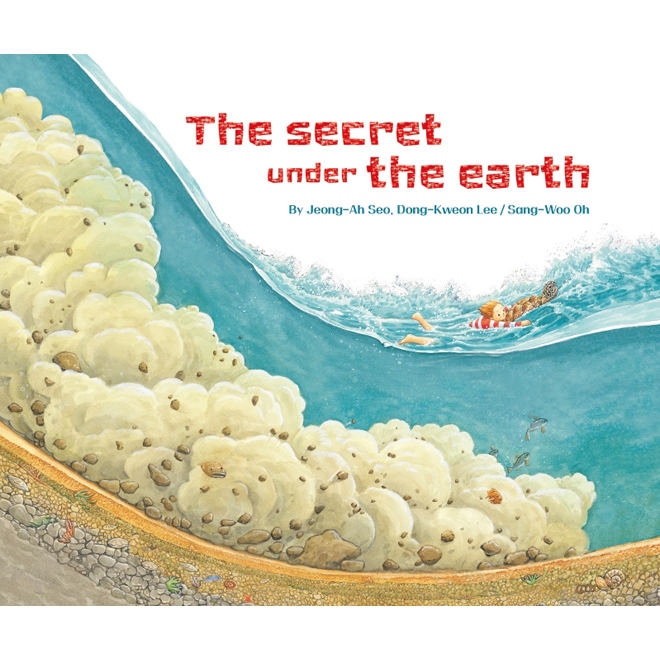
할인
도서정가제
소득공제
해외배송가능
The secret under the earth (이땅의비밀)(영문)
양장
| 정가 | 15,000원 |
|---|---|
| 판매가 | 13,500원(10% 할인) |
| 포인트적립 | 750원 |
| 배송정보 | 배송비 | 2,500원 (17,000원 이상 무료) |
|---|---|---|
출고예정일 |
(평일 기준) 주문일로부터 2일이내 |
|
| 배송방법 | 두란노몰 배송 | |
| 해외배송 | 가능 |
상세정보
이 책이 속한 분야
I can see in-between the layers of rock fish that are trapped in stone.
I wonder what happened to them.
All of the mysteries hidden in this Earth.
Let's go to solve them all.
I wonder what happened to them.
All of the mysteries hidden in this Earth.
Let's go to solve them all.
목차
이 책은 목차가 없습니다.
출판사 서평
I can see in-between the layers of rock
fish that are trapped in stone.
I wonder what happened to them.
All of the mysteries hidden in this Earth.
Let's go to solve them all.
1. Story
Flip the cover over, and you will meet the main Story contents
filled with beautiful watercolor paintings.
A child runs into a fish fossil.
Like it will swim out of the rock!
"Why has the fish turn into a stone?"
Curious as to what happened to the fish,
the child gets on a journy to find out the Story
that is hidden under the Earth.
The kid visits deep into the oceans
through the passage of time dimensions, he visits the original Earth that was peaceful and beautiful.
And there he witnesses remarkable events
that happened to the Earth's landmasses--
where the large landmasses cracked up, burst open, and broke apart!
where the entire Earth drowned,
shaken, and split, and moved.
The scientific information in the Story.
1. Each scene of the Story contains simple scientific lessons as Tips.
2. Every scene of the Story is linked to Helpful Words that helps the reader find out more scientific contents.
2. Let’s find out! (Helpful words)
The Tips and Helpful Words explain the scientific details easily while reading the Story.
Enlarge it
Let’s find out! (Helpful words)
Long ago, people used to think that the Earth was flat and plain-shaped everywhere. But someone asked “Is that really so?”, and more discovery led to the realization that the Earth is round like a ball. It is important that we ask questions about what we take for granted and how we tend to think. What kind of questions, then, did scientists ask lately? And what did they find out?
Table of Helpful words
● Do other planets have land and sea?
● What does the sea floor look like?
● Why does hot water come out of the ocean floor?
● Did land and sea look the same as they do today?
● What is the evidence that all continents used to be one landmass?
● Did the ground split slowly or quickly?
● What would happen when the ocean floor splits quickly?
● How much water is there inside the Earth?
● How did layered sedimentary rocks form?
● How did fossils form?
● What would happen to people and animals?
● What happened when the volcano Mt.St. Helens erupted?
● How could a piece of land sink beneath another?
● How fast did the grounds move?
● Where did the water that used to cover the Earth go?
● Couldn’t all the fish die if the lava heated the ocean waters?
● How did the Ice Age come about?
● When did the dinosaurs live?
● What do the land masses that sunk look like today?
3. The age group this book is written for
〈The Secret under the Earth〉 is a picture book.
Just looking at the pictures will give you glimpses of the contents.
The words were written at a simple level
so that they can be read as easily as looking at the pictures.
However, reading the words, the pictures, and the helpful words
together carefully will help you understand
catastrophic plate tectonics more deeply.
This book was written to be understood by
little children, grade school students,
middle and high school students, and even adults.
Anyone can read it!
fish that are trapped in stone.
I wonder what happened to them.
All of the mysteries hidden in this Earth.
Let's go to solve them all.
1. Story
Flip the cover over, and you will meet the main Story contents
filled with beautiful watercolor paintings.
A child runs into a fish fossil.
Like it will swim out of the rock!
"Why has the fish turn into a stone?"
Curious as to what happened to the fish,
the child gets on a journy to find out the Story
that is hidden under the Earth.
The kid visits deep into the oceans
through the passage of time dimensions, he visits the original Earth that was peaceful and beautiful.
And there he witnesses remarkable events
that happened to the Earth's landmasses--
where the large landmasses cracked up, burst open, and broke apart!
where the entire Earth drowned,
shaken, and split, and moved.
The scientific information in the Story.
1. Each scene of the Story contains simple scientific lessons as Tips.
2. Every scene of the Story is linked to Helpful Words that helps the reader find out more scientific contents.
2. Let’s find out! (Helpful words)
The Tips and Helpful Words explain the scientific details easily while reading the Story.
Enlarge it
Let’s find out! (Helpful words)
Long ago, people used to think that the Earth was flat and plain-shaped everywhere. But someone asked “Is that really so?”, and more discovery led to the realization that the Earth is round like a ball. It is important that we ask questions about what we take for granted and how we tend to think. What kind of questions, then, did scientists ask lately? And what did they find out?
Table of Helpful words
● Do other planets have land and sea?
● What does the sea floor look like?
● Why does hot water come out of the ocean floor?
● Did land and sea look the same as they do today?
● What is the evidence that all continents used to be one landmass?
● Did the ground split slowly or quickly?
● What would happen when the ocean floor splits quickly?
● How much water is there inside the Earth?
● How did layered sedimentary rocks form?
● How did fossils form?
● What would happen to people and animals?
● What happened when the volcano Mt.St. Helens erupted?
● How could a piece of land sink beneath another?
● How fast did the grounds move?
● Where did the water that used to cover the Earth go?
● Couldn’t all the fish die if the lava heated the ocean waters?
● How did the Ice Age come about?
● When did the dinosaurs live?
● What do the land masses that sunk look like today?
3. The age group this book is written for
〈The Secret under the Earth〉 is a picture book.
Just looking at the pictures will give you glimpses of the contents.
The words were written at a simple level
so that they can be read as easily as looking at the pictures.
However, reading the words, the pictures, and the helpful words
together carefully will help you understand
catastrophic plate tectonics more deeply.
This book was written to be understood by
little children, grade school students,
middle and high school students, and even adults.
Anyone can read it!
더보기

배송안내
| 두란노몰 배송 |
두란노몰에서 재고를 보유하고 있는 도서, 음반, 세미나 테이프와 일부 교회용품입니다. 두란노몰에서 지정한 택배회사를 통해 고객님께 배송됩니다. 배송료는 17,000원 미만일 경우 2,500원, 17,000원 이상일 경우 무료배송입니다. 배송에 대한 불편사항이 발생할 경우 전화바랍니다. (02-2078-3300) |
|---|---|
| 거래처배송 |
장바구니에 거래처 배송상품으로 분류 됩니다. 두란노몰 배송상품과는 별도로 배송 됩니다. 두란노몰과 협력하는 거래처에서 직접 배송해드리며, 거래처 또는 고객이 배송비를 부담합니다. (거래처별로 배송비가 상이하니 상품 상세정보를 꼭 확인해주세요.) 상품명 앞에 [착불]로 표기되어 있는 제품은 주문금액과 관계없이 무조건 배송비를 지불하셔야 합니다. 배송에 따른 불편사항이 발생할 경우 거래처와 협력하여 처리해 드리겠습니다. |
교환/반품안내
| 교환/반품 신청 기간 |
고객님 사유에 의해 신청할 경우, 상품 수령 후 7일 이내에 신청 가능합니다. 당사의 사유에 의해 신청할 경우, 상품 수령 후 3개월 이내에 신청 가능합니다. |
|---|---|
| 교환/반품 배송비 |
당사의 사유에 의해 신청할 경우, 해당 상품의 회수 비용은 무료이나, 고객님 사유에 의해 신청할 경우, 왕복배송비는 고객님 부담입니다. 제품 검수과정에서 사유가 일치하지 않을 경우, 거부 또는 반품으로 진행될 수 있으며 이로 인해 발생되는 추가 배송비는 고객님 부담입니다. 유료로 반송할 경우 발송요금과 다르며 지역에 따라 차이가 날 수 있습니다. |
| 교환/반품 불가 사유 |
고객님 사유에 의해 신청할 경우, 배송완료일로부터 7일이 경과한 경우 불가합니다. 당사의 사유에 의해 신청할 경우, 배송완료일로부터 3개월이 경과한 경우 불가합니다. 고객님의 부주의로 인한 훼손 및 상품가치상실 등의 경우 불가합니다. 상품에 따라 교환/반품이 안 될 수 있으니 해당 상품의 상세정보를 참고해 주십시오. |

.jpg)


.jpg)




 카테고리
카테고리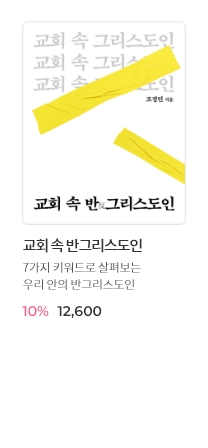
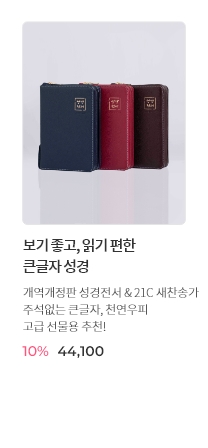
![[유아유치] 예수님이랑 나랑 - 3 / 4 월호 [유아유치] 예수님이랑 나랑 - 3 / 4 월호](/upload/design/2024/welcome_lnb_qt.jpg)
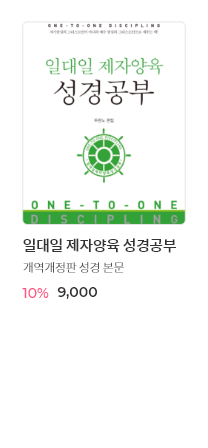
.png)
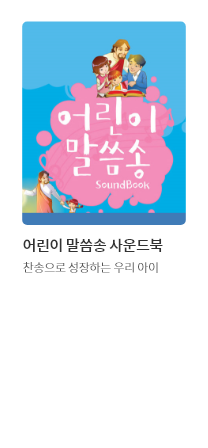
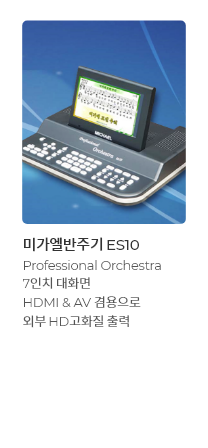








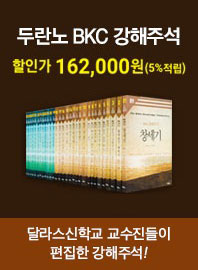
.png)
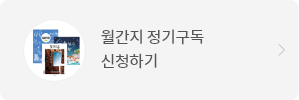
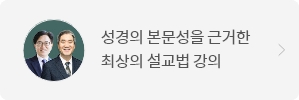
.png)

















